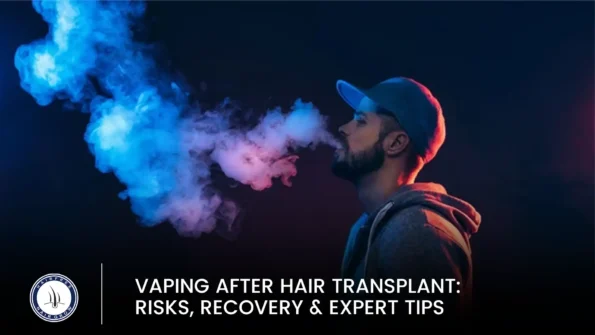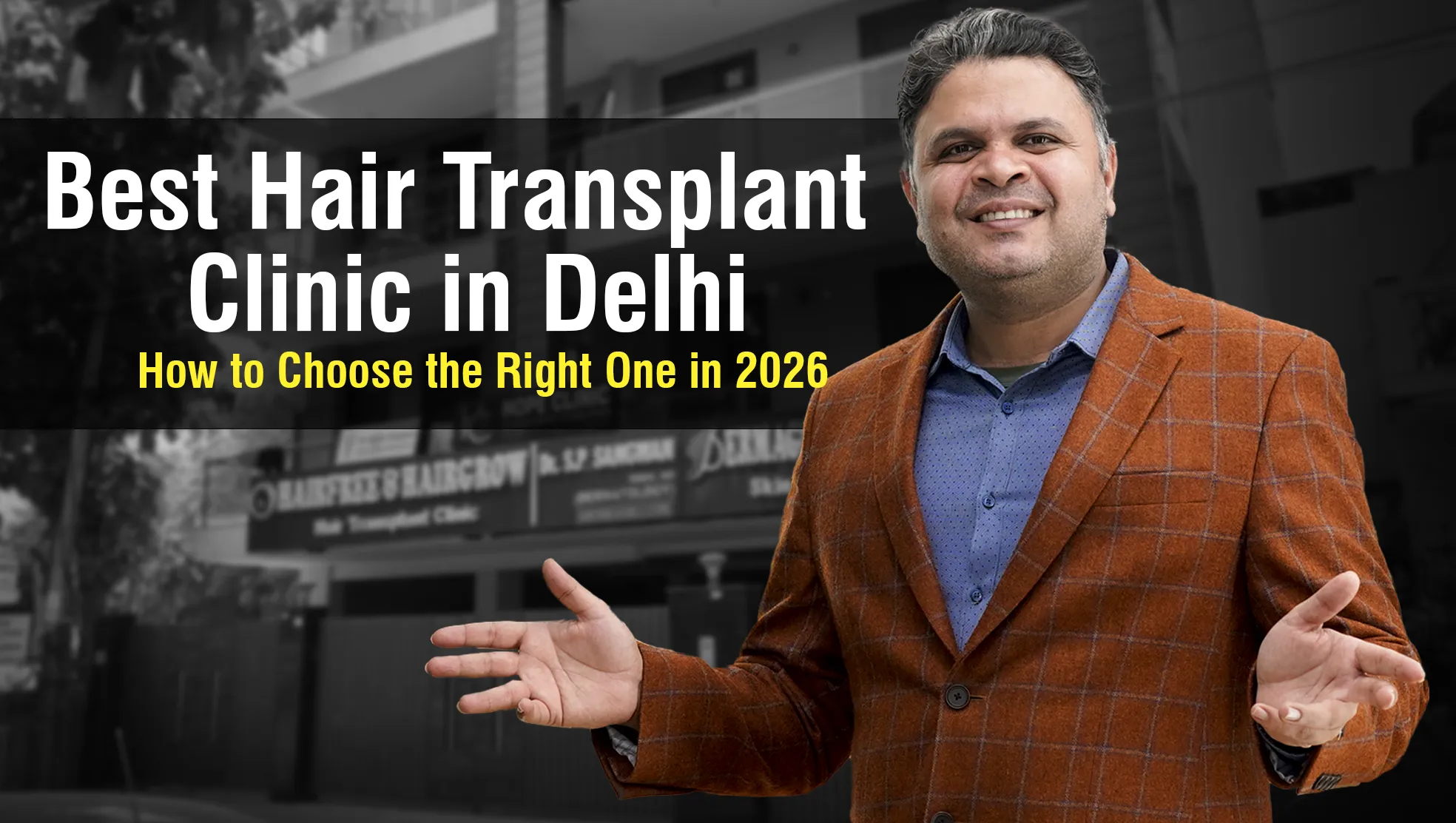So, you’ve had a hair transplant and you’re wondering about vaping after the procedure. Let us explain it in a simple way for you to understand. After new hair comes in, your body needs time to heal. Like smoking, vaping puts bad stuff into your body that makes it harder for your body to heal. Learn how vaping after hair transplant affects healing and hair growth.
Why You Should Avoid Vaping After Hair Transplant
- Reduced Oxygen Levels: It is important not to use a vaping device after a hair transplant as it can damage your new hair growth↗️. Vaping can make it harder for your body to get the oxygen it needs to heal your hair after a transplant.
- Decreased Blood Flow: When you use vape with nicotine, it can narrow your blood vessels making it harder for blood to flow through them. This can prevent your hair from getting the nutrients it needs and your body can take longer to heal.
- Increased Risk of Infection: Smoking or vaping can make it easier for you to get sick, which can make it harder for your hair transplant to work well.
How Long Should You Avoid Vaping After a Hair Transplant?
Doctors usually recommend avoiding vaping for at least 2 to 4 weeks after a hair transplant. This gives your scalp enough time to heal, reduces the risk of infection, and helps new hair follicles settle in properly.
However, if you can quit permanently, that’s the best choice for long-term hair health. Even after the healing period, nicotine can still harm your hair by reducing blood flow and oxygen supply to the follicles.
Does Vaping Without Nicotine Affect Hair Transplant Results?
Even if you’re vaping nicotine-free e-liquids, it can still irritate your respiratory system and expose your body to chemicals like propylene glycol and formaldehyde. While these may not affect blood vessels like nicotine, they can still increase inflammation, weaken your immune system, and slow down the healing process after hair transplant.
For best results, it’s safest to avoid all types of vaping during the hair transplant recovery phase.
What You Can Do Instead
Types of Hair Transplant Procedures
Follow Post-Op Instructions
Healthy Lifestyle
A healthy lifestyle means taking care of your body by eating good food, exercising and drinking enough water. Good foods include fruits↗️, vegetables, whole grains and lean proteins. Exercise can be things like walking, swimming or yoga. Drinking water helps your body function better. When you take care of your body and mind, you can help your body heal and stay happy and healthy.
Remember, your hair transplant results↗️ are an investment in yourself. So, give your body the best chance to recover and thrive by avoiding vaping and taking care of your health. Your new hair will thank you for it!
Stay healthy, stay informed, and rock that new hair with confidence!
Real Patient Experiences – What Happens If You Vape After Hair Transplant?
Many patients who continued vaping after hair transplant reported:
- Poor graft survival
- Longer healing time
- Increased scabbing or infection
- Patchy hair growth or poor density
Some even needed a second procedure because the first didn’t give full results. So while vaping might feel harmless, it can quietly undo all the effort (and money) you’ve put into your hair restoration.
Protect Your Hair Transplant Investment – Choose Expert Care
Vaping might seem harmless, but it can silently affect your healing and hair growth after a transplant. That’s why it’s so important to follow expert guidance—not just during the procedure but throughout recovery.
At Hairfree & Hairgrow↗️, we don’t just perform transplants—we support you through every phase of your hair restoration journey. Our specialists provide personalized aftercare tips to ensure your results last a lifetime.
Book your FREE consultation today with India’s trusted hair restoration experts.
Call us at +91 72728 32222
Final Thoughts
Vaping after hair transplant surgery can seriously impact your recovery and the success of your results. Whether it’s nicotine-based or nicotine-free, vaping reduces oxygen supply, weakens your immune system, and delays healing—making it harder for your new hair to grow properly.
If you’ve invested time, money, and hope into your hair restoration, protecting that investment means quitting vaping, following your surgeon’s instructions, and living a healthy lifestyle. These small changes can lead to big results for your hair and overall well-being.
FAQs
1. Can I use nicotine-free vape after a hair transplant?
Even nicotine-free vaping may introduce harmful chemicals into your system, potentially affecting healing. It’s best to avoid all forms of vaping for at least 4–6 weeks post-surgery or as recommended by your surgeon.
2. How long should I avoid vaping after a hair transplant?
Most surgeons recommend avoiding vaping for at least 4–6 weeks after the procedure to ensure optimal healing. However, quitting permanently will provide the best results for your hair and overall health.
3. Does vaping affect hair growth in non-transplanted areas?
Yes, vaping, especially with nicotine, can reduce blood flow and nutrient delivery to the scalp, potentially leading to thinning or weaker hair growth in non-transplanted areas over time.
4. What if I accidentally vaped after my hair transplant?
If you’ve vaped accidentally, stop immediately and consult your surgeon. They may recommend extra precautions, such as increased hydration or monitoring for signs of poor healing, to mitigate any potential damage.
5. Are there alternatives to vaping to manage cravings post-surgery?
To manage cravings, consider nicotine replacement therapies (like patches or gum) only if approved by your surgeon. Other alternatives include mindfulness techniques, chewing sugar-free gum, or engaging in light physical activity to distract from cravings.

Written By
Dr. Pankaj Khunt
MD – Ukraine
Dr. Pankaj Khunt, a specialist in hair restoration, provides expert advice on vaping after hair transplant procedures. With a patient-centered approach, Dr. Khunt ensures optimal healing and hair growth, guiding patients through safe recovery practices.
Disclaimer
We’ve made all possible efforts to ensure that the information provided here is accurate, up-to-date and complete, however, it should not be treated as a substitute for professional medical advice, diagnosis or treatment. See Detailed Disclaimers Here.


